 Just like the Washington $1 coins, the Adams coins show an abundance of edge lettering errors. The first errors to surface for this issue were doubled edge lettered coins. This error occurs when a coin passes through the edge lettering machine twice. These come in two variations which are recognized by NGC:
Just like the Washington $1 coins, the Adams coins show an abundance of edge lettering errors. The first errors to surface for this issue were doubled edge lettered coins. This error occurs when a coin passes through the edge lettering machine twice. These come in two variations which are recognized by NGC:
Doubled edge lettering with the second set of letters overlapping the first (in various degrees from close to far). Because of space considerations, this is described on the NGC certification label as DBL.EDG.LET. – OVERLAPPED.
Doubled edge lettering with the second set of letters inverted over the first. On inverted examples, the two sets of edge lettering are in opposite orientation. One faces up when the obverse side is up, and the other is upside down. This is described on the NGC certification label as DBL.EDG.LET. – INVERTED.
Since these coins are fed through the edge lettering machine at random orientation, the edge lettering will appear randomly (as will the doubling) on the edge of the coins. This explains why some of the doubled edge lettering is overlapping and some inverted.
Here are some photos of doubled edge lettering. Again, the variety of positioning and orientation of the letters is essentially limitless.
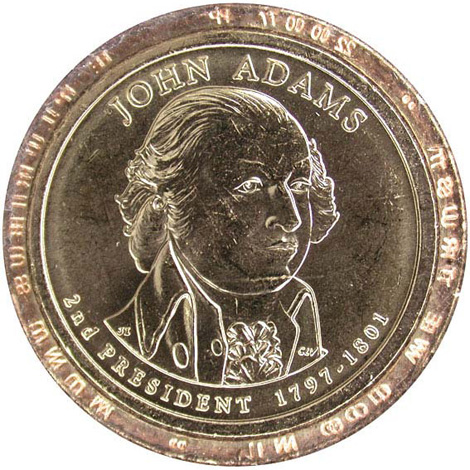
Photo #1a: Obverse with exploded edge view of 2007 P John Adams $1, showing overlapped doubled edge lettering.

Photo #1b: Close up of overlapped doubled edge lettering.
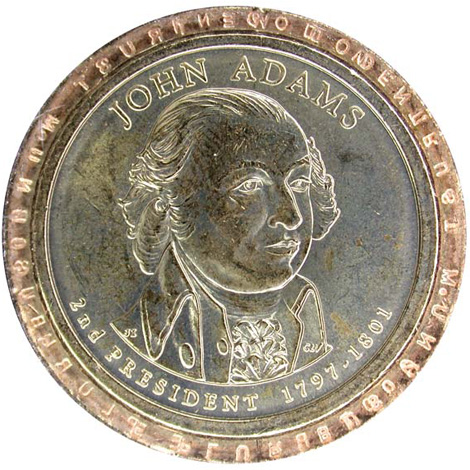
Photo #2a: Obverse with exploded edge view of 2007 P John Adams $1, showing inverted doubled edge lettering.

Photo #2b: Close up of edge, showing the inverted doubled edge lettering.
Another error that we have seen occurs when a coin has missed the edge lettering process entirely, and therefore has a blank edge. NGC certifies this Mint Error as MISSING EDGE LETTERING.
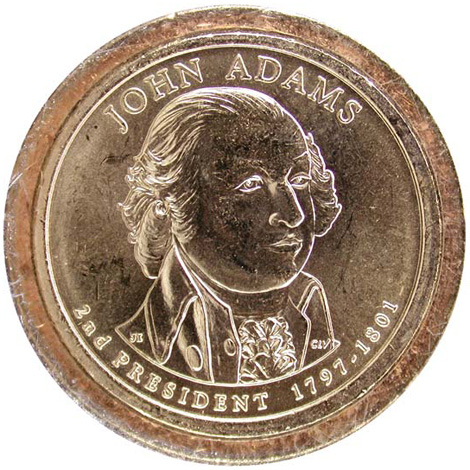
Photo #3a: (2007) John Adams $1 obverse, with exploded edge view.
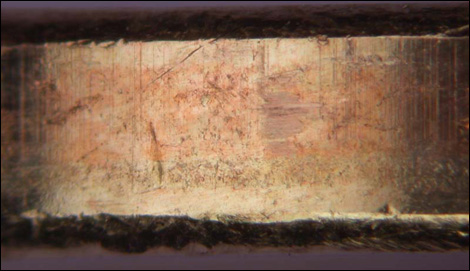
Photo #3b: Close up of the blank edge.
With the Washington dollars, we saw some of the errors that exist for virtually every modern coin type. These include errors such as filled dies and rotated dies. Dirt, grease or other material can adhere to the die during minting. The filled portion of the die does not impart detail to the struck coin. Errors of this type are labeled as OBV STRUCK THRU.
Rotated dies can be either minor (within mint tolerance) or major. This error occurs when the die turns during striking or when the dies is inserted improperly into the coinage press. The Adams dollars has been found with varying degrees of rotation unlike the Washington where, to date, only one variation has been seen. For some examples on the Adams dollar, this rotation resulted in “medallic” alignment versus the correct, “coin” alignment. Medallic alignment occurs then the dies are rotated a full 180 degrees. The illustration below shows various types of alignment. NGC will designate rotated dies when the rotation is equal to or greater than 15 degrees.
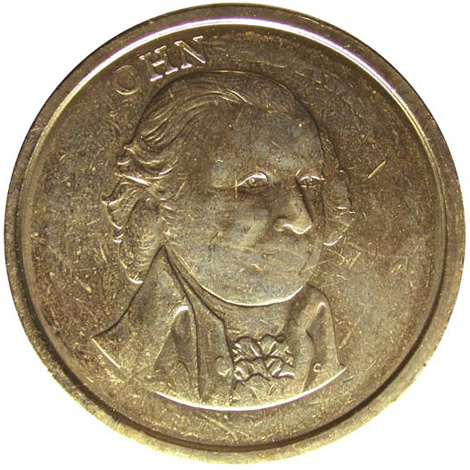
Photo #4: John Adams $1, obverse struck through. The dies are filled with grease, dirt, or metal particles causing a significant loss of design.
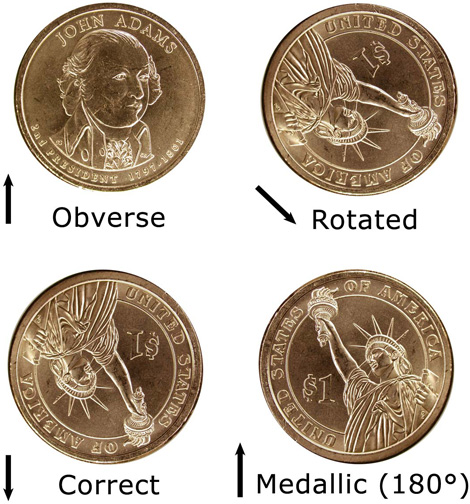
Photo #5: A variety of rotated dies errors have been submitted to NGC. This illustration describes various type of rotation.
This next coin is new to the series. On this coin, the edge lettering die seems to have been inadvertently laser-etched, making the entire edge of the coin appear frosted or matte-like. At first glance, without putting a loop to the coin, the edge appears simply less shiny than normal coins. Magnification of the edge of the coin reveals the lines associated with laser etching. While NGC is not recognizing this the matte edge Adams $1 at this time, we are currently investigating it for attribution.
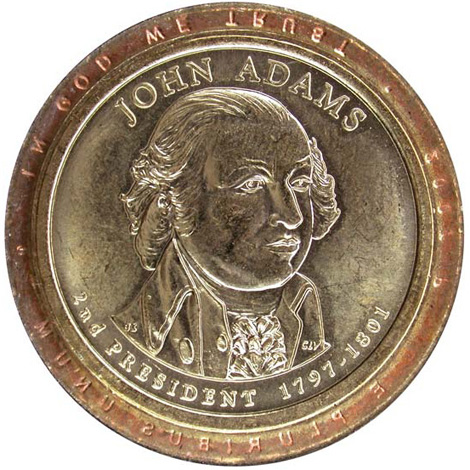
Photo #6a: Obverse and full edge view of John Adams dollar displaying “matte” edge.
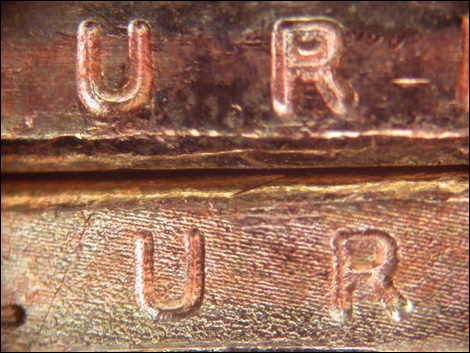
Photo #6b: Comparison of “matte” edge with normal edge. The regular coin appears at type, and the frosted version at bottom.
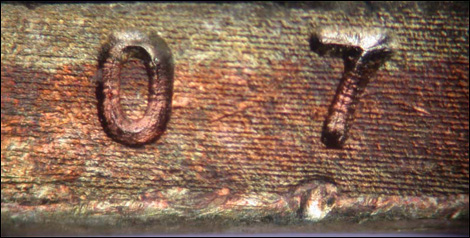
Photo #6c: A close up of the date portion of the edge and parallel lines suggesting laser etching.

